PROTODISPATCH
A monthly digital publication of artists’ dispatches on the life conditions that necessitate their work.
NOVEMBER 16, 2023
NOVEMBER 16, 2023
ON TRANSLUCENCY
Himali Singh Soin
คลิกที่นี่เพื่อดูข่าวประชาสัมพันธ์ภาษาไทย
Türkçe versiyonu için lütfen aşağı kaydırın.
In a time of profound loss, artist Himali Singh Soin offers a ballad and manifesto on spaces of occluded clarity, and the relationships between human and non-human survival therein. She suggests this inbetween as a zone of safety, opacity, and potential for permeable binaries and selves.
Visit Castello di Rivoli to see full video work.

“On Translucency” is a mytho-poetic manifesto about the space between the shore and the tide, the translucent shallow, visible and invisible, dense and sheer. It departs from Édouard Glissant’s notion of opacity and arrives in places where frosted windows keep the heat of the sun out, soften the detailed edges of bodies while holding on to the relational, letting light through and not shutting out the other. Translucency argues for a kind of not-knowing that allows for the private world of thought and the gregarious world of friendship, as island to archipelago. This manifesto is filtered through the translucent lenses of air, ice, skin, oil, and film. Translucency is both the right to illegibility and the desire for interpretation. Translucency is an erotic way back into our post-natural lifeways.
Some things that I will say will remain illegible, others will be graspable. There will be things you see right through, and aspects that escape you. They escape me too. The practice of translucency is allowing for ambiguity while reaching for clarity. Translucency is the mediation between the thing as it is and the imagination of what else it can be. Translucency fills ruptures, offering new futures. It heaves in the erotic, between nature and artifice, the scrim of knowing and the shadow of not-knowing. We live in translucent (im)materiality: Oil. Skin. Film. Ice. Air. Water. Paper. Smog. Mirages. Windows. The internet. Music. The mind. The cloud. The island. Silt. Salt.
The world is indefinite, leaky, and porous, with osmotic membranes between everything. Practicing translucency is “to bring,” as Glissant says, “the world into contact with the world, to bring some of the world’s places into contact with others.” Translucency is a way of seeing the world in a different light.

In between objects or spaces
Translucency is the distance between two intimate objects or spaces. In places where the light is bright, and the houses are close together—in urban tropics or the Mediterranean—the windows of kitchens and bathrooms are frosted. Frosted windows are used in places where it is almost always warm, and life is led at a pace attuned to the slow, dense air, against the accelerated clock of capital, in the early morning or the late evening, where bodies can move half-naked in their own space, when voices can call out to each other from balconies, chaos always adjacent and easily refracted. We, the alterity, we watch over one another, we let each other in, we keep each other out. We choose how much, and with whom.
Jaalis, built by Mughal architects across Central and South Asia, are latticed doors and windows to grant women the power to know the happenings of a place without being seen, a kind of ideological ventilation. These portals blur the looking out with the looking in. The jaali functions as a veil disguising the gaze of defiant eyes. It is against the right to total information, against exposure, against the kind of intimacy that leaves no room for flirtation.
Translucency blocks out direct light, white and bright and hot, and lets softness in. Softness so that the sharpness of surfaces doesn’t disappear, but loses focus around the edges, merging the distinction between matter and mind. The other loses detail and looks more like you: tender afternoon, blushed, dimmed, humid, lubricated.

In the diasporas, the immigrant, the exiled
These thin spaces between bodies are like borders between places: thresholds of partial comprehension, forming a new, diasporic zone.
A fish from one country deflected by the current finds itself caught in the other.
How can we know each other across the world? We are half-imagined and half-real. When we accept translucency, we might reach towards what Glissant calls a “creolized body.” A community made up of difference, actively engaging with each other, creating new, hybrid communities.
I will never know what it is like to be you. What it is like to be a bat or a stone or you.
And you will try and analyze me. Not first for where I come from, or how I choose to be, or the dust and the heat and the smog that I have grown up with, but through the light, how it forms these shadows, these lines, what these shadows can tell you about the self I choose not to reveal, my expressions of contentment and discontentment. The depth of composition, the metaphors I use so as not to say the thing I can’t say.
Translucency is not the relief of the end of the journey, but the cool you find midway, the energizing rest. When the mind finds home in the body, even when that home is far away.
Meet me somewhere in the center of this infinity.
I won’t turn away. I am the accumulation of all the energies that have come before me and those that will follow. But I have the right to opacity. I do not need to be transparent for you.
What is opacity if not shifting weights of translucency? The number of layers, the thickness of the atmosphere between, the color and materiality and power to resist or receive the light. By letting light in, we make room for the pleasures of darkness.
There, we offer up our translucent selves. We are islands when we are multicultural, multiethnic, multiracial, differently abled, indifferently labeled communities living beside each other with no language in between.
We pass energies between each other. We begin to understand. Not understand each other but understand what it means to form a relation between two, to become a third.
To find this moment of shifting translucency, we must share the work. No, we are not answerable to You. No, we will not explain how slavery, classism, racism, casteism are all entangled with You. We are learning it for ourselves, trying to unravel generations of dispossession.
Like dragonflies, we must find a way to make our wings translucent, to avoid the harm of predators. Maybe we can share the work—when I am exhausted, you will take over for me, and on and on, we divide the labor and multiply the love. This way, we begin to subvert the architectures of the apparent.
Transparency is an apparatus signified by patriarchy, positivity, whiteness, Western models of morality, exhibition, control, evidence. Reflecting the glassy skyscrapers cleaned by those who could never afford their view, we begin to subvert the guise of rationality, subvert a capitalist infrastructure that preferences the individual over interdependence, the spectacle over speculation, and we begin to question where prejudice comes from, reach outwards towards the material, and inwards towards the immaterial.
If and when this happens, we experience a moment of friendship between people, events, ideas, that otherwise may not occur. We can try and understand, but it must be mutual, even while it is uncertain. Friendship, love, and dreams are translucent, lucid between the real and hallucinogenic. You can feel it but never completely know it. Fiction is like this too, in its relationship to truth.

In the presence of ghosts
Ghost stories abound in communities that bear collective suffering. In India, the ghosts of many conquests show up in folklore: a ghost stealing land, a ghost arriving as an archetype of guilt. Sometimes they are amorphous blobs, sometimes they arrive as animals with wings or fins or tails, teaching us to listen with intention and breathe with our skin. They appear, they protect us or haunt us, remind us, help us make a choice, maybe even clean the house, quietly do their work and leave, phantom. They are often only detected by the most vulnerable character, the character who is grieving, and thus most present and open to any form of intervention.
The ghost is a protean, diaphanous being. It speaks to the deep present moment, always filtered through history while trying to fit into or reconfigure an untenable future. It is also in-between and atemporal. The apparition is a state of mind, in which the lens of time has a soft focus, a peripheral vision that allows you to see the microscopic and the grand scale of things at once. The imprecision of the blur and what happens there. To be partially absorbent while still protecting your inner world. To be ghost is to be generous with boundaries. The ghost story allows us to construct a language of translucency: both “is” and “can be.” Would be, try to be, maybe. Language aspiring to be in-between, to be almost, to be not fake, but speculative, inquisitive, simulative. Aspiring to believe stories as if they were real. To rely more on the if and the how than on the is and the what. To think of the word whether (or not) like the weather itself—unpredictable, witty—and not try and alter it, but make an altar for it, worship it. Language (and the weather) can protect you if you don’t try and control it. This resignation to randomness and this ritual of imagination is translucency.

In shifting atmospheres
Our lives are ghostly: semi, meta, muffled, unclear, without shape or time, blurred, scattered, gelatinous, gossamer, irregular, diffuse, shadowy, sheer, cryptic.
We refuse to be known.
We are gentle, fragile, continuous. We are neither solid nor spirit.
We are neither cause nor effect.
We are film. We are mesh. We are a glassy substrate.
Translucency pertains to a non-binary, multitudinous sexuality that revels in the in-between, does not need to come “out,” but also does not need to hold itself “in.” Translucency is neither male nor female. It is not revealing nor concealing.
We are vapor.
We are water.
Muslin, hemp, silk.
Honey, wax.
Leaves.
We are also plastic, oil, pollution, radiation. The atmosphere is not perfectly visible, rather mediated by strata of toxins, carbons, microbes, particulate matter, smoke, clouds, sulfur, dust, mist, fog, haze, seeds, pollen, doubt, mirages.
The water is translucent too, full of jellyfish as it gets warmer and warmer.
Translucency suggests softer ways of being, making kin with one another, while still adapting to the changing Natural, like birds who build their nests from wires and bottle caps, or like lizards who roam our houses as our landscapes desertify.
Translucency is inter-species. Sometimes it flickers and creates new shapes, forms, fires.

In ice archives
In the Weddell Sea, under the ice in Antarctica, Notothenioid fish are so translucent that you can see their brain and their spine through their skin. Over time, and with our changing waters, they’ve lost all their hemoglobin. Fish, like the women behind the jaalis, find the ambiguity of translucency compelling; they remain invisible to a system which would otherwise subsume them.
Hydromedusae, sea butterflies, bristle worms, zooplanktons, krill, jelly larvae, squids, and flounders are all translucent. With layers of calcium so delicate they can stay light underwater, where it is so dark, their translucence allows them to light their inner worlds.
Ice has always been a translucent memory holder: the particles of lead trapped at the poles tell the story of our extractionist history. Ice cores are chronometers, telling time like the rings on trees. We can see how the climate has shifted, we can see the history of plagues, we can even see war. I like to think that translucency plays a role in ice being an information carrier and a sensorial anti-colonial agent. As the ice melts into lucid clarity, we lose our connection to land, to the past, to history, we lose our ancestry, we also lose our future. A world without ice is like flying towards the end of the horizon and hitting a clear, transparent, pane of glass.

In between the conscious and unconscious self
Translucency is a media-tion. Images are translucent, in that they are a representation of the real. In a time of complete information and complete control over information, can we hold a butter lamp to the screen and be a filter ourselves? The right to information with the right to difference. Translucency is the middle way. Between craft and instinct, between logic and intuition, between chance and order.
Translucency is an undulating wave, a wave of emotion, a tide. A feeling of melancholy but not sadness, of pleasure but not happiness.
Translucency is a call to detect, form, and visualize porosities, connections, patterns, and associations. Relations. Across spatial, temporal, and socio-cultural boundaries.
Consciousness is translucent. In disparate research, we sometimes get a glimpse into patterns between seemingly distinct ideas. I was writing a bird opera while researching nuclear culture. When I went looking for the bird, I found it breeding at a nuclear site.

In action
Could mobilizing translucency help us perceive things as interrelated and not distinct, so love seeps through toxicity, justice through irony? An archipelago is a collection of islands: can we be self and find a relation to the other at the same time? Can we be connected by translucent waters, our shoreline constantly adapting to the weather, gelatinous with the translucency of the sea creatures beneath. Can we absorb and resist, be rooted and still hybrid, forming new cultures, many possible identities? Can we have polylogues while keeping our inner voice alive? Can we operate with intuition in the laboratory of our lives? And when bombs make the air hazy, and when the heat makes the atmosphere sticky, and when floods cause land to become liquid, can we call upon the materiality of translucency to help us out of disaster?
Can we be more like poems, not too much, not too little, no beginning or end, fragments and fullness, anchored and floating, meaning and nonsense both?
Translucency is not an impossible aspiration towards a fixed utopia, it is inherently not extreme: it proposes deep being, while allowing different temporalities to inform, affect, and change the present moment. To appear and disappear. Not the obliteration of opacity nor the immediacy of transparency.
While translucency is about light, it is not about vision only: it asks to listen to non-human creatures, how they call and respond, to sink into the place between oil and water, recognizing its repulsive force and still wonder at its glimmering sheen. It takes pleasure in perversity.
With thanks to advaya’s ‘world as archipelago', Kate Marshall, and Alexis Rider for reading and the team at Protodispatch for their belief in translucency.
With a nod to Édouard Glissant, Judith Butler, Ming Smith, Byung-Chul Han, Andrés Jaque, and the Sufi singers on the border of India and Pakistan, separated from their lovers by the salt desert, in the Rann of Kutch.
Read Past Protodispatches here
* * *
ภาษาไทย
ว่าด้วยความโปร่งแสง
(บทความนี้เป็นส่วนหนึ่งของการร่วมมือระหว่าง GroundControl และพันธมิตรสื่อทางศิลปะ Protocinema ผู้เผยแพร่สื่อดิจิทัลด้านศิลปะรายเดือน เพื่อนำเสนอมุมมของของศิลปินที่มีต่อสังคมร่วมสมัย การเมือง วัฒนธรรม สิ่งแวดล้อม และเศรษฐกิจ โดยดำเนินการผ่าน Protodispatch ผู้เป็นตัวกลางเผยแพร่ข่าวประจำเดือนให้แก่พันธมิตรในเครือ โดย GroundControl ได้รับเกียรติให้เป็นพันธมิตรสื่อเพื่อเผยแพร่บทความในภาษาไทย ร่วมกับ Artnet.com จากนิวยอร์ก และ Argonotlar.com จากอิสตันบูล เพื่อร่วมกันสร้างโครงข่ายของระบบนิเวศน์ทางศิลปะที่เข้มแข็ง และเพื่อให้ผู้สนใจศิลปะชาวไทยสามารถเข้าถึงได้โดยปราศจากกำแพงด้านภาษา)
ว่าด้วยความโปร่งแสง
โดย Himali Singh Soin
ในห้วงเวลาแห่งการสูญเสียอย่างสุดซึ้ง ศิลปิน Himali Singh Soin นำเสนอบัลลาดและคำประกาศ ว่าด้วยพื้นที่แห่งความชัดเจนที่ถูกบดบัง และความสัมพันธ์ระหว่างมนุษย์และสิ่งที่ไม่ใช่มนุษย์ ผู้ซึ่งต่างพยายามเอาชีวิตรอดภายในพื้นที่แห่งนั้น เธอนำเสนอพื้นที่ที่ดำรงอยู่ระหว่างกลาง ในฐานะพื้นที่ปลอดภัย พื้นที่ของเฉดสีต่าง ๆ และพื้นที่แห่งความเป็นไปได้สำหรับตัวตนและคู่ตรงข้ามที่เลื่อนไหลไปมา

“On Translucency”, oil on water, 2023; image courtesy Himali Singh Soin; commissioned by Protocinema/Protodispatch
“ว่าด้วยความโปร่งแสง” คือคำประกาศเชิงปรัมปรา-กวีนิพนธ์ เกี่ยวกับพื้นที่ระหว่างชายฝั่งและกระแสน้ำ ความโปร่งแสงและความตื้น ที่มองเห็นและมองไม่เห็น ที่ทึบตันและที่มองทะลุได้ โดยมีจุดเริ่มต้นจากแนวคิดเรื่องความทึบของ Édouard Glissant อันนำมาสู่แนวคิดเรื่อง ‘หน้าต่างที่ถูกแช่แข็ง’ ที่ในแง่หนึ่ง มันก็เป็นกำแพงกั้นความร้อนจากภายนอก พร่าเลือนรายละเอียดของร่างกาย แต่ในอีกแง่หนึ่ง มันยังคงยึดโยงอยู่กับความเชื่อมโยงอื่น ๆ และปล่อยให้แสงลอดผ่านได้ ไม่ปิดกั้นสิ่งอื่น แนวคิดเรื่องความโปร่งแสงได้ชูประเด็นเรื่อง ‘ความไม่รู้’ ซึ่งเปิดให้เห็นตำแหน่งแห่งที่ใหม่ของโลกความคิดแบบส่วนตัว กับโลกแห่งความคิดของสัมพันธภาพอื่น ๆ ในฐานะเกาะและหมู่เกาะทางความคิด ถ้อยแถลงของศิลปินชิ้นนี้ถูกกลั่นกรองผ่านมุมมองอันโปร่งแสงของอากาศ น้ำแข็ง ผิวหนัง น้ำมัน และแผ่นฟิล์ม ความโปร่งแสงเป็นทั้งสิทธิที่จะไม่ถูกตีความ และความปรารถนาที่จะได้รับการตีความความโปร่งแสงคือวิธีเร้าอารมณ์ที่ย้อนกลับไปยังวิถีชีวิตแบบหลังธรรมชาติของเรา
บางสิ่งที่ฉันกำลังจะพูดจะถูกปล่อยให้อ่านไม่ออก สิ่งอื่น ๆ จะพอเข้าใจได้ จะมีบางสิ่งที่คุณเห็นทะลุปรุโปร่ง และมีแง่มุมต่าง ๆ หลบหนีคุณไป มันก็หนีฉันไปเหมือนกัน ปฏิบัติการแห่งความโปร่งแสงคือการโอบรับความคลุมเครือ พร้อมกับไขว่คว้าความชัดเจน ความโปร่งแสงเป็นสื่อกลางระหว่างสิ่งที่มันเป็นของมันอย่างนั้น กับจินตนาการว่ามันจะเป็นอะไรได้อีกบ้าง ความโปร่งแสงเติมเต็มช่องว่าง นำเสนออนาคตใหม่ มันขยับอยู่ในความยั่วยวนระหว่างธรรมชาติกับงานจำลอง ผืนม่านแห่งการรู้ และเงามืดแห่งความไม่รู้ เราใช้ชีวิตอยู่ในความ(ไม่)เป็นวัตถุที่โปร่งแสง: น้ำมัน. ผิวหนัง. แผ่นฟิล์ม. น้ำแข็ง. อากาศ. น้ำ. กระดาษ. หมอกควัน. ปรากฏการณ์ลวงตา. หน้าต่าง. อินเตอร์เน็ต. ดนตรี. ความคิด. เมฆ. เกาะ. ตะกอน. เกลือ.
โลกนี้ไร้ความแน่นอน รั่วซึม และพรุนรู ที่มีเยื่อดูดซึมอยู่ระหว่างทุก ๆ อย่าง การใช้ความโปร่งแสง ตามที่ Glissant บอก คือ “การนำ โลกมาสัมผัสกับโลก การนำสถานที่บางแห่งของโลกมาสัมผัสกับที่อื่น ๆ” ความโปร่งแสงคือวิธีมองดูโลกในมุมใหม่

“On Translucency”, oil on water, 2023; image courtesy Himali Singh Soin; commissioned by Protocinema/Protodispatch
ระหว่างวัตถุหรือพื้นที่
ความโปร่งแสงคือระยะห่างระหว่างคู่วัตถุหรือพื้นที่ที่คุ้นเคย ในสถานที่ซึ่งแสงส่องสว่าง และบ้านเรือนอยู่ใกล้กัน—ในเขตร้อนแบบเมืองหรือเมดิเตอร์เรเนียน—หน้าต่างห้องครัวและห้องน้ำจะเป็นฝ้าทึบมัว
หน้าต่างปิดฝ้ามักถูกใช้ในพื้นที่ที่อากาศร้อนเกือบจะตลอดเวลา และชีวิตดำเนินไปตามอากาศที่ช้าและหนาแน่น ขัดกับเวลาเร่งรีบของทุน ในช่วงเช้าตรู่หรือกลางดึก ที่ร่างกายจะเคลื่อนไหวเกือบเปลือยเปล่าได้ในพื้นที่ของตน เมื่อเสียงร้องเรียกหากันได้จากเหล่าระเบียง ความวุ่นวายมักจะอยู่ประกบกันและหักทิศไปได้ง่ายเสียด้วย เรา ความเป็นอื่น (alterity) เราเฝ้าดูแลกัน เราอนุญาติให้กันและกันเข้ามา เรากั้นกันและกันออกไป เราเลือกเองว่าแค่ไหนและกับใคร
‘จาฬี’ ที่สถาปนิกโมกุลทั่วเอเชียกลางและใต้สร้างกัน คือประตูและหน้าต่างที่ขัดกันเป็นตารางเพื่อให้อำนาจแก่ผู้หญิงในการล่วงรู้ว่าอะไรเป็นอะไรในสถานที่นั้นโดยไม่ถูกมองเห็น เหมือนการระบายลมอุดมการณ์อย่างหนึ่ง ช่องประตูเหล่านี้ทำให้การมองออกไปและการมองเข้ามาพร่ามัวเฉกเช่นเดียวกัน จาฬีทำงานเหมือนม่านปิดบังสายตาที่ท้าทายจ้องมอง มันต่อต้านสิทธิต่อข้อมูลเบ็ดเสร็จ ต่อต้านการเปิดเผย ต่อต้านการแนบชิด ที่ไม่เหลือที่ว่างสำหรับการหยอกเย้ายั่วยวน
ความโปร่งแสงปิดกั้นแสงสว่างตรง ๆ ที่ขาว จ้า แล้วก็ร้อน และให้ความนุ่มฟุ้งเข้ามา นุ่มฟุ้งให้ความคมชัดในพื้นผิวคงไม่หายไป แต่ปล่อยให้ตรงขอบ ๆ หลุดโฟกัสไป หลอมรวมความต่างระหว่างวัตถุและจิต สิ่งอื่นสูญเสียรายละเอียดไปและดูจะเหมือนกับคุณ: ยามบ่ายแสนละมุน, แก้มแดง, มัว, ชื้น, แฉะลื่น

“On Translucency”, oil on water, 2023; image courtesy Himali Singh Soin; commissioned by Protocinema/Protodispatch
ในผู้พลัดถิ่น ผู้อพยพ ผู้ต้องเนรเทศ
ช่องว่างบาง ๆ ระหว่างร่างกายเหล่านี้เป็นเหมือนพรมแดนระหว่างสถานที่: จุดเริ่มต้นของความเข้าใจเพียงบางส่วน ก่อให้เกิดเขตใหม่แห่งการพลัดถิ่น
ปลาจากประเทศหนึ่ง พลัดทิศทางไปด้วยกระแสน้ำ พบว่าตัวเองติดอยู่อีกที่
เราจะรู้จักกันและกันทั่วทั้งโลกได้อย่างไร? เรามันครึ่งจินตนาการครึ่งจริง พอเรายอมรับความโปร่งแสงได้ เราอาจจะไปถึงสิ่งที่ Glissant เรียกว่า “ร่างที่ถูกกลืนกินทางวัฒนธรรม” (creolized body) ชุมชนหนึ่ง เกิดขึ้นจากความแตกต่าง แข็งขันกันพัวพันอยู่กับกันและกัน ก่อให้เกิด ชุมชนลูกผสม
ฉันไม่มีวันรู้เลยว่าการเป็นคุณมันเป็นอย่างไร มันเป็นอย่างไร การเป็นค้างคาว หรือก้อนหิน หรือคุณ
แล้วคุณก็จะมาพยายามวิเคราะห์ฉัน ไม่ได้เริ่มจากว่าฉันมาจากไหน หรือฉันเลือกดำรงอยู่อย่างไร หรือว่าฝุ่นกับไอร้อน และหมอกควันที่ฉันโตมากับมัน แต่ด้วยแสงสว่าง วิธีที่มันก่อรูปเงาขึ้นมา เส้นสายพวกนี้ เงาพวกนี้จะบอกคุณเกี่ยวกับตัวตนที่ฉันเลือกจะไม่เปิดเผย อาการปรากฏของความพอใจและไม่พอใจ ความลึกขององค์ประกอบภาพ คำเปรียบเปรยที่ฉันใช้จะได้ไม่ต้องพูดสิ่งที่ฉันพูดไม่ได้
ความโปร่งแสงไมใช่การปลดเปลื้องที่จุดสุดท้ายของการเดินทาง แต่เป็นความร่มเย็นที่คุณพบระหว่างทาง การพักผ่อนเพิ่มพลัง เมื่อจิตได้กลับบ้านในร่างกาย แม้บ้านนั้นจะอยู่ไกลแสนไกล
พบกับฉันได้ที่ไหนสักแห่งในในกลางของภาวะไร้ที่สิ้นสุดนี้
ฉันจะไม่หันหลังหนี ฉันคือจุดศูนย์รวมพลังงานทั้งหมดที่มีมาก่อนฉันและที่กำลังจะตามมา แต่ฉันมีสิทธิต่อความทึบแสง ฉันไม่จำเป็นต้องโปร่งใสเพื่อคุณ
ความทึบ (opacity) จะเป็นอะไรได้ ถ้าไม่ใช่การแปลงน้ำหนักของความโปร่งแสง? จำนวนของชั้น ความหนาแน่นของมวลบรรนยากาศตรงกลาง สีสันและความเป็นวัตถุธาตุและอำนาจในการต่อต้านหรือเปิดรับแสง ในการปล่อยให้แสงเข้า เราเปิดพื้นที่สำหรับความสำราญแห่งความมืด
ที่นั่น เรานำเสนอตัวตนที่โปร่งแสงของเรา เราคือเกาะมากมายเมื่อเราเป็นชุมชนที่หลากหลายทางวัฒนธรรม เชื้อชาติ ชาติพันธุ์ ทำอะไรได้ต่างกัน ถูกแปะป้ายไม่ต่างกัน ชุมชนต่าง ๆ อาศัยเคียงข้างกันและกันโดยไม่มีภาษามากั้น
เราส่งต่อพลังงานระหว่างกันและกัน เราเริ่มที่จะเข้าใจ ไม่ได้เข้าใจกันและกัน แต่เข้าใจความหมายของการสร้างความสัมพันธ์ระหว่างสอง เพื่อที่จะเป็นสาม
การจะพบห้วงการเปลี่ยนแปลงของความโปร่งแสง เราต้องแบ่งปันงานด้วยกัน ไม่ เราไม่จำเป็นต้องตอบคุณ ไม่ เราจะไม่อธิบายว่าระบอบแห่งทาส ชนชั้น วรรณะ มันพันเกี่ยวอยู่กับคุณอย่างไร พวกเราเรียนรู้มันเพื่อตัวเอง เพื่อพยายามปลดปล่อยการฉกฉวยที่ดำเนินมารุ่นสู่รุ่น
เช่นเดียวกับแมลงปอ พวกเราต้องหาทางให้ปีกเราโปร่งแสง เพื่อเลี่ยงอันตรายจากเหล่านักล่า บางทีเราอาจจะแบ่งงานกัน — ตอนที่ฉันล้า คุณก็รับช่วงต่อจากฉัน เราแบ่งงานกัน และเพิ่มพูนความรัก เราทำกันแบบนี้ บ่อนทำลายสถาปัตยกรรมแห่งความชัดเจน
ความโปร่งใส่เป็นกลไกที่เผยให้เห็นระบอบชายเป็นใหญ่ พลังบวก ความขาว ศีลธรรมแบบตะวันตก การจัดแสดง การควบคุม หลักฐาน สะท้อนภาพตึกกระจกใสสูงเสียดฟ้า ที่เช็ดถูโดยผู้คนที่ไม่มีปัญญาจ่ายค่าวิวนั้นได้ พวกเราเริ่มบ่อนทำลายใบหน้าปลอม ๆ ของความเป็นเหตุเป็นผล บ่อนเซาะโครงสร้างทุนนิยมที่โอบอุ้มปัจเจกชนมากกว่าการพึ่งพาอาศัยกัน ปรากฏการณ์เหนือการคาดเดา และเราเริ่มตั้งคำถามออกไปที่วัตถุและเข้ามาหาอวัตถุ ว่าอคติมาจากไหนกัน
ถ้าหากและเมื่อมันเป็นแบบนี้ เราจะตกอยู่ในห้วงขณะแห่งไมตรีระหว่างผู้คน เหตุการณ์ แนวคิด ซึ่งจะไม่เกิดในขณะอื่น เราอาจลองทำความเข้าใจก็ได้ แต่มันจะต้องเกิดขึ้นด้วยกันเท่านั้น ถึงจะไม่มั่นคงอย่างไรก็ตาม มิตรภาพ ความรัก และความฝัน มีลักษณะโปร่งแสง แจ่มแจ้งระหว่างความจริง (the real) และภาพหลอน คุณอาจสัมผัสมันได้ แต่จะไม่มีทางเข้าใจมันจริง ๆ เรื่องแต่งก็สัมพันธ์กับความจริงอย่างนี้เหมือนกัน

“On Translucency”, oil on water, 2023; image courtesy Himali Singh Soin; commissioned by Protocinema/Protodispatch
ในการปรากฎตัวของภูติผี
เรื่องผีมักจะงอกงามอยู่ในชุมชนที่แบกความทุกข์ส่วนรวมไว้ด้วยกัน ในอินเดีย ภูติผีแห่งชัยพิชิตมากมายโผล่ขึ้นมาในนิทานพื้นบ้าน: ผีขโมยดินแดน ผีที่โผล่มาดังแม่แบบแห่งตราบาป บางทีก็มาเป็นก้อนเหลว ๆ บางทีก็มาเป็นสัตว์มีปีกหรือมีครีบหรือมีหาง สอนให้เราฟังอย่างตั้งใจและหายใจด้วยผิวหนัง พวกเขาปรากฏกาย พวกเขาปกป้องเราหรือล่าเรา เตือนเรา ช่วยเราตัดสินใจ หรือแม้แต่ทำงานบ้าน ทำงานของเขาไปเงียบ ๆ แล้วก็จากไป ภาพหลอน มีก็แต่พวกที่อ่อนไหวเท่านั้นที่จะเจอเขา พวกที่หมองหม่น ซึ่งจะจิตอ่อนจนโดนจัดการง่ายที่สุด
ผีสามารถกลายร่างได้ และมีลักษณะใส โปร่ง บาง มันสนทนากับห้วงแห่งปัจจุบันที่ลึกซึ้ง เคลื่อนไหลผ่านประวัติศาสตร์ แล้วก็พยายามจะปรับตัวหรือปรับแต่งให้เข้ากับอนาคตที่ไม่อาจต้านทานได้ไปด้วยพร้อมกัน มันยังเป็นสิ่งที่ก้ำกึ่งระหว่างกลางและก็ไม่ได้อยู่ในระบอบเวลาด้วย ปรากฏการณ์ผีหลอกคือปรากฏการณ์ทางจิต ที่เลนส์แห่งเวลาไม่สามารถโฟกัสมองอะไรได้ มุมมองแบบรอบนอกที่คุณจะได้เห็นสิ่งที่เล็กจิ๋วและใหญ่ยักษ์ทั้งหมดพร้อม ๆ กัน ความไม่แน่ชัดในความมัว และสิ่งที่เกิดขึ้นตรงนั้น เพื่อดูดซับมาบ้าง โดยยังปกป้องที่โลกภายของคุณอยู่ การเป็นผีคือการโอบเอื้อกับเขตแดน เรื่องผีเปิดให้เราประกอบสร้างภาษาแห่งความโปร่งแสง: ทั้ง “เป็น” และ “เป็นไปได้” อยากจะเป็น พยายามเป็น เป็นไปได้ ภาษาอยากจะเป็นอะไรระหว่างกลาง เป็นอะไรที่เกือบจะ ไม่เฟค แต่เป็นการคาดเดา การอยากรู้อยากเห็น เป็นแบบจำลอง ปรารถนาจะเชื่อเรื่องราวต่าง ๆ ราวกับมันเป็นอย่างนั้นจริง การจะอยู่กับความถ้า (the if) กับความอย่างไร (the how) มากกว่าความอะไร (the what) ลองนึกถึงคำว่า ไม่ว่าจะ (whether) เหมือนกับคำว่าสภาวะอากาศ (weather) — มันเดาทางไม่ได้ มีไหวพริบ — และไม่ได้พยายามจะเปลี่ยนแปลงมัน (alter it) แต่จัดที่ให้มัน (altar for it) บูชามัน ภาษา (และภาวะอากาศ) ปกป้องคุณได้ ถ้าคุณไม่พยายามไปควบคุมมัน การจำนนต่อความบังเอิญและพิธีกรรมการวาดภาพนี้ คือความโปร่งแสง

“On Translucency”, oil on water, 2023; image courtesy Himali Singh Soin; commissioned by Protocinema/Protodispatch
ในมวลอากาศที่เคลื่อนตัว
ชีวิตของเรามันเหมือนผี: ครึ่งกลาง เกี่ยวอยู่กับตัวเอง เลือนลาง ไม่ชัดเจน ไม่มีรูปทรงและเวลา เบลอ กระจัดกระจาย เหนอะหนะ บางเบา ไร้ระเบียบ ฟุ้ง ลึกลับ เยื่อใส คลุมเครือ
เราปฏิเสธการเป็นที่รับรู้
เราอ่อนโยน บอบบาง สืบเนื่อง พวกเราไม่ใช่ทั้งก้อนตัน ไม่ใช่ทั้งวิญญาณ
เราไม่ใช่ทั้งเหตุและผล
เราคือแผ่นเยื่อ พวกเราคือตาข่ายแก้วใส
ความโปร่งแสงเกี่ยวกันกับเพศที่มากมายและไม่อิงกับระบบชาย-หญิง ซึ่งเล่นครึกครื้นอยู่ที่ความระหว่างกลาง ไม่จำเป็นจะต้อง “เปิด” ตัว แต่ก็ไม่จำเป็นต้อง “เก็บ” ตัวเหมือนกัน ความโปร่งแสงไม่ใช่ทั้งความเป็นชายหรือหญิง มันไม่ใช่ทั้งการเปิดเผยและปกปิด
เราคือไอระเหย
เราคือน้ำ
ผ้าฝ้าย ผ้าป่าน ผ้าไหม
น้ำผึ้ง ขี้ผึ้ง
ใบไม้
และเราก็เป็นพลาสติก น้ำมัน มลพิษ รังสี ภูมิอากาศไม่สามารถเห็นได้ชัดเจน แต่สื่อมาผ่านชั้น ๆ ของสารพิษ คาร์บอน จุลินทรีย์ อนุภาคเล็ก ๆ ควัน เมฆ กัมมะถัน ฝุ่น ฝ้า หมอก เมล็ด ละอองเกสร ความคลางแคลงใจ ภาพลวงตา
น้ำเองก็โปร่งแสง ยิ่งมันอุ่นขึ้น ก็ยิ่งเต็มไปด้วยแมงกะพรุน
ความโปร่งแสงชวนเราดำรงชีวิตและดองมิตรกับผู้อื่นแบบนุ่มนวลขึ้น โดยก็ปรับตัวให้เข้ากับสภาพธรรมชาติที่กำลังเปลี่ยนแปลง เหมือนนกที่ก่อรังขึ้นมาจากสายไฟและฝาขวด หรือกิ้งก่าที่ท่องไปทั่วบ้านเราพร้อมกับภูมิทัศน์ที่กำลังกลายเป็นทะเลทราย
ความโปร่งแสงนั้นข้ามสายพันธุ์ บางครากะพริบ แล้วก็สร้างรูปทรง รูปร่าง หรือประกายไฟใหม่ขึ้นมา

“On Translucency”, oil on water, 2023; image courtesy Himali Singh Soin; commissioned by Protocinema/Protodispatch
ในจดหมายเหตุน้ำแข็ง
ในทะเลเวดเดลล์ (Weddell Sea) ใต้น้ำแข็งในแอนตาร์กติกา ปลาเลือดขาวมีความโปร่งแสงจนเรามองเห็นสมองและสันหลังทะลุผ่านผิวหนังได้ เมื่อเวลาเปลี่ยนไปและสายน้ำเปลี่ยนตาม พวกมันสูญเสียฮีโมโกลบิน (hemoglobin; ส่วนประกอบในเม็ดเลือด) ปลาเองก็เหมือนหญิงสาวหลังเงาจาฬี พวกเขาแสวงหาความกำกวมของความโปร่งแสงที่กระตุ้นความสนใจ ; พวกเขารักษาความล่องหนไว้ ในระบบที่พยายามจะวิเคราะห์จัดแจงพวกเขา
เต่าคองู, ผีเสื้อทะเล, บุ้งทะเล, แพลงก์ตอนสัตว์, เคย, หนอนใส, ปลาหมึก และ ปลาซีกเดียว ทั้งหมดล้วนโปร่งแสง ด้วยชั้นแคลเซียมที่ซับซ้อน พวกมันรักษาความสว่างไว้ได้ที่ใต้น้ำ ซึ่งมืดมาก ความโปร่งแสงของพวกมันเปิดให้โลกภายในของพวกมันสว่างขึ้นมา
น้ำแข็งก็เป็นเครื่องบันทึกความทรงจำที่โปร่งแสงมาตลอดเหมือนกัน: อนุภาคตะกั่วเล็ก ๆ ที่ติดอยู่ในแก่นกลางบอกเล่าเรื่องราวแห่งการสกัดของเรา แกนน้ำแข็งคือสุดยอดแห่งเครื่องบอกเวลาที่เที่ยงตรง (chronometers) บอกเวลาแบบเดียวกับวงปีในต้นไม้ เราจะเห็นเลยว่าสภาพอากาศเปลี่ยนไปอย่างไร เห็นว่าเกิดโรคระบาดอะไรในประวัติศาสตร์ เห็นกระทั่งสงคราม ฉันชอบคิดว่าความโปร่งแสงก็เหมือนเวลาที่น้ำแข็งทำหน้าที่เป็นผู้จัดเก็บข้อมูลและตัวการต้านอาณานิคมทางประสาทสัมผัส เมื่อน้ำแข็งละลายกลายเป็นความกระจ่างใส เราสูญเสียความเชื่อมต่อกับผืนดิน กับอดีต กับประวัติศาสตร์ เราสูญเสียบรรพบุรุษของเรา แล้วเราก็เสียอนาคตไปด้วย โลกที่ไม่มีน้ำแข็งก็เหมือนการบินไปปลายขอบฟ้าแล้วชนเข้ากับบานกระจกใส

“On Translucency”, oil on water, 2023; image courtesy Himali Singh Soin; commissioned by Protocinema/Protodispatch
ในระหว่างตัวตนที่รู้สึกนึกและตนที่ไร้สำนึก
ความโปร่งแสงเป็น สื่อ-กลาง ภาพต่าง ๆ มีความโปร่งแสง ตรงที่มันคือภาพตัวแทนของความเป็นจริง ในช่วงเวลาแห่งการเข้าถึงข้อมูลสมบูรณ์ และการควบคุมข้อมูลแบบสมบูรณ์ เรายังจะถือตะเกียงเนย (Butter lamp พระชาวธิเบตนิยมใช้เพื่อทำสมาธิ) อยู่ที่หน้าจอแล้วเป็นตัวคัดกรองข้อมูลเองได้ไหม? สิทธิในการเข้าถึงข้อมูลและสิทธิในการแตกต่าง ความโปร่งแสงคือทางสายกลาง ระหว่างการประดิษฐ์งานและสัญชาตญาณ ระหว่างตรรกะและญาณเฉลียว ระหว่างความเป็นไปได้และระเบียบ
ความโปร่งแสงคือระลอกคลื่น คลื่นของอารมณ์ กระแสน้ำ ความรู้สึกหมองหม่นแต่ไม่ได้โศกเศร้า เปรมปรีดิ์แต่ไม่ใช่ความสุข
ความโปร่งแสงคือเสียงเรียกให้ตรวจจับ ก่อรูป และทำให้เห็นภาพ ความพรุน ความเชื่อมต่อ แบบแผน และความใกล้ชิด ความสัมพันธ์ ข้ามระบบพื้นที่ เวลา และขอบเขตของสังคมวัฒนธรรม
จิตรู้สำนึกคือความโปร่งแสง ในงานวิจัยต่าง ๆ บางทีก็มีช่วงขณะที่เราพบแบบแผนระหว่างแนวคิดที่ดูจะต่างกันออกไป ฉันกำลังเขียนโอเปร่าแห่งนกในตอนที่ศึกษาวัฒนธรรมนิวเคลียร์อยู่ เมื่อฉันออกไปมองหานก ฉันพบมันผสมพันธุ์กันอยู่ที่เขตนิวเคลียร์

“On Translucency”, oil on water, 2023; image courtesy Himali Singh Soin; commissioned by Protocinema/Protodispatch
ในการกระทำ
การมระดมจัดวางความโปร่งแสงจะช่วยให้เรารับรู้สิ่งต่าง ๆ แบบที่ต่างก็เชื่อมโยงกันอยู่และไม่ได้แยกขาดออกจากกัน เพื่อที่ความรักจะได้แหวกแทรกผ่านความเป็นพิษลบ ๆ ได้ไหม ความยุติธรรมจากความขัดแย้ง หมู่เกาะคือเกาะต่าง ๆ ที่รวมกันเข้าเป็นกลุ่ม: พวกเราจะสามารถะเป็นตัวของตัวเองและมองหาความสัมพันธ์กับผู้อื่นไปพร้อมกันได้ไหม เราจะเชื่อมโยงกันด้วยน้ำโปร่งแสง ชายหาดของเราปรับตัวให้เข้ากับสภาพอากาศอยู่เสมอ เป็นวุ้นที่โปร่งแสงเห็นสัตว์ทะเลข้างใต้ เราจะดูดซับและต่อต้าน ยึดรากและผสมผสาน ก่อรูปวัฒนธรรมใหม่ ๆ อัตลักษณ์ที่เป็นได้มากมาย ได้หรือไม่ เราจะพูดหลายภาษาโดยรักษาเสียงของตัวเองภายในหัวได้หรือไม่ เราจะใช้สัญชาตญาณทำงานในห้องทดลองของชีวิตเราได้หรือไม่ และเมื่อระเบิดเปลี่ยนอากาศให้ขุ่นมัว และเมื่อความร้อนทำให้อากาศเหนียวเหนอะหนะ และเมื่อน้ำท่วมผืนดินจนมันแหลกเหลวไปหมด เรายังจะเรียกใช้สภาพวัตถุของความโปร่งแสง พาเราออกจากภัยพิบัติได้หรือไม่
เราเป็นเหมือนบทกวีมากกว่านี้ได้ไหม ไม่มากไป ไม่น้อยไป ไม่มีจุดเริ่มต้นหรือจุดจบ แตกกระจายและเป็นส่วนสมบูรณ์ ปักหลักและล่องลอย แฝงความหมายและไร้สาระทั้งคู่
ความโปร่งแสงไม่ใช่ปณิธานเกิดคาดหวังสำหรับสังคมอุดมคติ มันไม่ได้สุดโต่งเลยโดยเนื้อแท้ของมัน: มันเสนอการเป็นอยู่ที่ลึกซึ้ง โดยที่ให้การรับรู้เวลาแบบอื่นเข้ามาแจ้ง ส่งผล และเปลี่ยนแปลงห้วงขณะปัจจุบัน เพื่อปรากฏและหายไป ไม่ใช่การขจัดความทึบและไม่ใช่การเสกสร้างความโปร่งใส
ถึงความโปร่งแสงจะเป็นเรื่องของแสง แต่มันไม่ได้เกี่ยวกับแค่การมองเห็น: มันเรียกร้องให้ฟังสิ่งมีชีวิตที่ไม่ใช่มนุษย์ วิธีที่พวกเขาขานและตอบ ให้จมเข้าไปในที่ระหว่างน้ำกับน้ำมัน รับรู้ถึงพลังอันน่ารังเกียจของมันและเงาวาววิบวับของมัน มันหยิบจับความสำราญอยู่ในความวิปริต
_ด้วยความขอบคุณแด่ advaya, Kate Marshall, Alexis Rider, Laura Raicovich.
ด้วยความระลึกถึง Édouard Glissant, Judith Butler, Ming Smith, Byung-Chul Han, Andrés Jaque, และเหล่านักร้องซูฟีที่ชายแดนอินเดียและปากีสถาน ผู้พลัดพรากจากคนรักโดยทะเลทรายเกลือ ที่ Rann of Kutch_
Read Past Protodispatches here* * *
TÜRKÇE
Yarı saydamlık üzerine
Himali Singh Soin, insan ile
insan olmayanların ilişkilerindeki arada kalmışlığı, geçirgen ikilikler
ve benlikler için bir güvenlik, opaklık ve potansiyel bölgesi olarak
öneriyor.
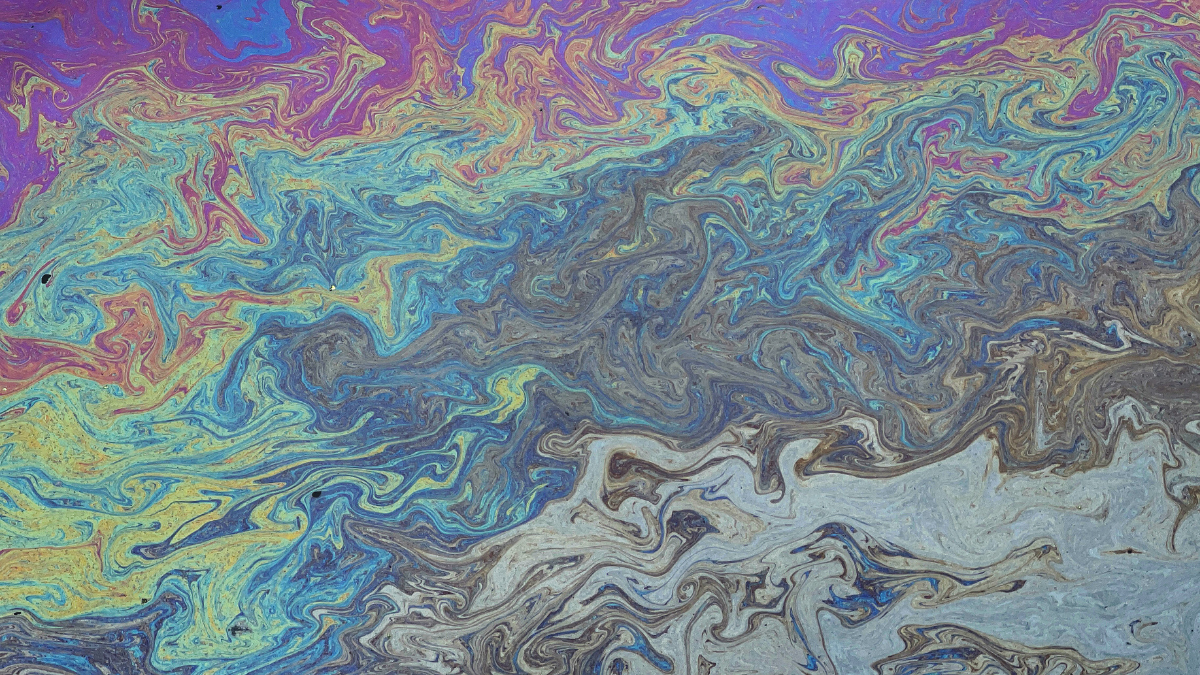
Derin bir kayıp döneminde, sanatçı Himali Singh Soin, tıkalı netlik alanları ve insan ile insan olmayanların bu alanlarda hayatta kalması arasındaki ilişkiler üzerine bir balad ve manifesto sunuyor. Bu arada kalmışlığı, geçirgen ikilikler ve benlikler için bir güvenlik, opaklık ve potansiyel bölgesi olarak öneriyor.
”Yarı Saydamlık Üzerine”, kıyı ile gelgit arasındaki mesafe, yarı saydam sığlık, görünen ve görünmeyen, yoğun ve yalın hakkında mitolojik-şiirsel bir manifestodur. Édouard Glissant’ın opaklık kavramından yola çıkarak buzlu pencerelerin güneşin ısısını dışarıda tuttuğu, ilişkisel olana tutunarak cisimlerin ayrıntılı kenarlarını yumuşattığı, ışığın içeri girip diğerini kapatmadığı yerlere varıyor. Yarı saydamlık, adadan takımadaya geçiş gibi, düşüncenin özel dünyasına ve arkadaşlığın sosyal dünyasına izin veren bir tür bilmemeyi savunur. Bu manifesto havanın, buzun, derinin, petrolün ve zar tabakasının yarı saydam merceklerinden süzülmüştür. Yarı saydamlık hem okunamazlık hakkı hem de yorumlanma arzusudur. Yarı saydamlık, doğallık sonrası yaşam yollarımıza giden erotik bir yoldur.
Söyleyeceğim bazı şeyler kavraması güç, bazıları ise anlaşılabilir olacak. Doğrudan gördüğünüz şeyler ve gözünüzden kaçan yönleri olacak. Benimkinden de kaçıyorlar. Yarı saydamlık pratiği, açıklığa kavuşurken belirsizliğe izin vermektir. Yarı saydamlık, olduğu gibi olan şey ile başka ne olabileceğine dair hayal gücü arasındaki dolayımlamadır. Yarı saydamlık, yeni gelecekler sunarak çatlakları doldurur. Doğa ile yapıntı arasındaki erotizmde, bilmenin perdesiyle bilmemenin gölgesinde belirir. Yarı saydam bir (na)maddesellik içinde yaşıyoruz: Petrol. Deri. Zar. Buz. Hava. Su. Kağıt. Sis. Seraplar. Pencereler. İnternet. Müzik. Akıl. Bulut. Ada. Silt. Tuz.
Dünya belirsizdir, sızdırandır ve gözeneklidir; her şeyin arasında ozmotik membranlar vardır. Yarı saydamlık pratiği, Glissant‘ın dediği gibi, “dünyayı dünyayla temasa geçirmek, dünyadaki bazı yerleri diğerleriyle temasa geçirmektir.” Yarı saydamlık, dünyayı farklı bir ışıkta görmenin bir yoludur.
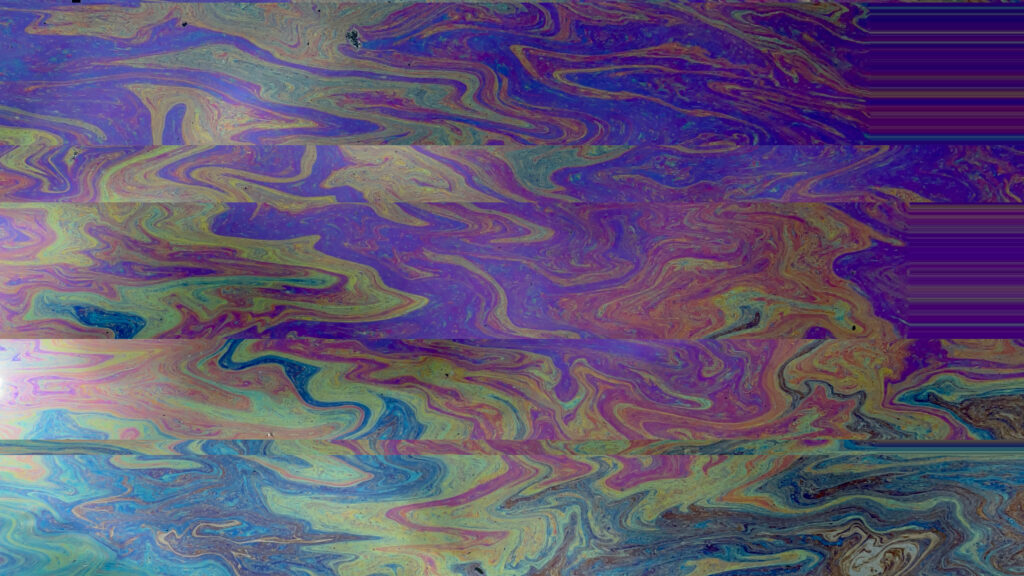
Nesneler veya alanlar arasında
Yarı saydamlık, iki yakın nesne veya alan arasındaki mesafedir. Işığın parlak olduğu ve evlerin birbirine yakın olduğu yerlerde (kentsel tropik bölgelerde veya Akdeniz’de) mutfak ve banyoların pencereleri buzludur. Buzlu pencereler, havanın neredeyse her zaman sıcak olduğu ve yaşamın sabah erken veya akşam geç vakitlerde sermayenin hızlanan saatine karşı, yavaş olana ve yoğun havaya uyum sağlayan bir tempoda ilerlediği yerlerde kullanılır; bedenlerin kendi alanlarında yarı çıplak hareket edebildiği yerlerde, balkonlardan seslerin birbirine seslenebildiği zamanlarda kaos her zaman dip dibedir ve kolayca kırılım gösterir. Ötekilikten doğru biz, birbirimizi gözetiriz, birbirimizi içeri alırız, birbirimizi dışarıda tutarız. Ne kadar ve kiminle olacağını seçeriz.
Orta ve Güney Asya’da Babürlü mimarlar tarafından inşa edilen jaali‘ler, kadınlara bir yerde olup bitenleri görülmeden bilme gücü veren, bir tür ideolojik havalandırma sağlayan kafesli kapı ve pencerelerdir. Bu portallar içeriye bakışla dışarıya bakışı bulanıklaştırır. Böylece jaali, meydan okuyan gözlerin bakışlarını gizleyen bir örtü görevi görür. Tam bilgi alma hakkına, teşhire, flörte yer bırakmayan bir yakınlığa aykırıdır.
Yarı saydamlık, beyaz, parlak ve sıcak olan doğrudan ışığı engeller ve yumuşaklığın içeri girmesine izin verir. Yumuşaklık sayesinde yüzeylerin keskinliği kaybolmaz, fakat kenarlardaki odağı kaybeder ve madde ile zihin arasındaki ayrımı birleştirir. Öteki olan ayrıntıyı kaybeder ve size daha çok benzer: yumuşak öğleden sonra, kızıl, solgun, nemli, kaygan.
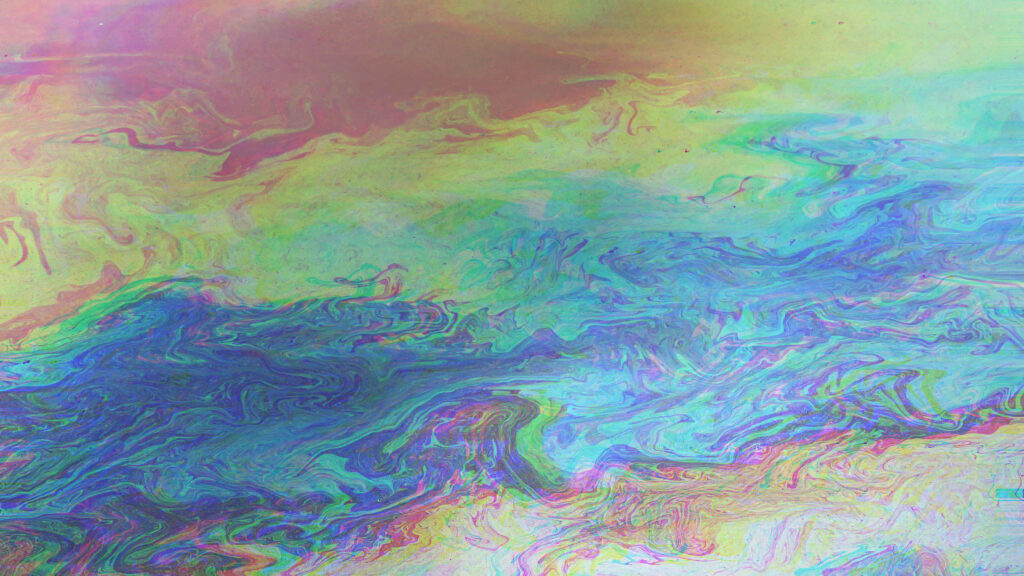
Diasporalarda, göçmen, sürgün
Bedenler arasındaki bu ince boşluklar, yerler arasındaki sınırlar gibidir: kısmi kavramanın eşikleri, yeni bir diasporik bölge oluşturur.
Akıntının yönü değiştirilen bir ülkeden gelen balık, kendini diğer ülkede yakalanmış halde bulur.
Dünyanın her yerinde birbirimizi nasıl tanıyabiliriz? Bizler yarı hayal ürünü ve yarı gerçeğiz. Yarı saydamlığı kabul ettiğimizde Glissant’ın “kreolleşmiş beden (creolized body)” dediği şeye ulaşabiliriz. Farklılıklardan oluşan, birbirleriyle aktif olarak etkileşime giren, yeni, hibrit topluluklar yaratan bir topluluk.
Ben, sen olmanın nasıl bir şey olduğunu asla bilemeyeceğim.Yarasa, taş ya da sen olmanın nasıl bir şey olduğunu.
Sen de beni analiz etmeye çalışacaksın. İlkin nereden geldiğim ya da nasıl olmayı seçtiğim ya da birlikte büyüdüğüm toz, ısı ve dumanla değil, ama ışıkla, onun bu gölgeleri, bu çizgileri nasıl oluşturduğuyla, bu gölgelerin sana açık etmemeyi seçtiğim benlik hakkında neler söyleyebileceğiyle, memnuniyet ve hoşnutsuzluk ifadelerimle analiz edeceksin. Kompozisyonun derinliğiyle, söyleyemediklerimi söylememek için kullandığım metaforlarla.
Yarı saydamlık, yolculuğun sonundaki ferahlık değil, yarı yolda bulduğunuz o serinlik, o enerji verici dinlenmedir. Zihin bedende yuva bulduğunda, her ne kadar o yuva çok uzakta olsa bile.
Bu sonsuzluğun ortasında bir yerde buluş benimle.
Ben geri dönmeyeceğim. Benden önce gelen ve devam edecek olan tüm enerjilerin birikimiyim ben. Ama benim opaklık hakkım var. Senin için şeffaf olmama gerek yok.
Yarı saydamlığın ağırlıklarını değişmiyorsa, peki o zaman opaklık nedir? Katmanların sayısı, aradaki atmosferin kalınlığı, rengi, maddeselliği ve ışığa direnme veya alma gücüdür. Işığın içeri girmesine izin vererek karanlığın zevklerine yer açarız.
İşte orası yarı saydam benliklerimizi sunduğumuz yerdir. Çok kültürlü, çok sayıda etnik gruptan oluşan, çok ırklı, farklı yeteneklere sahip, aralarında hiçbir dil olmadan yan yana yaşayan gelişigüzel etiketlenmiş topluluklar olduğumuz zaman bizler adalar oluruz.
Enerjileri birbirimize aktarırız. Anlamaya başlarız. Birbirini anlamaya değil de iki arasında ilişki kurmanın, üçüncü olmanın ne demek olduğunu anlamaya.
Bu değişen yarı saydamlık anını bulmak için işi paylaşmalıyız. Hayır, Size karşı sorumlu değiliz. Hayır, köleliğin, sınıfçılığın, ırkçılığın, kastçılığın Sizinle nasıl iç içe olduğunu açıklamayacağız. Biz bunu kendimiz için öğreniyoruz, nesiller boyu süren mülksüzleştirmeyi çözmeye çalışıyoruz.
Yırtıcı hayvanların zarar vermesinden kaçınmak için yusufçuklar gibi biz de kanatlarımızı yarı saydam hale getirmenin bir yolunu bulmalıyız. Belki işi paylaşabiliriz; ben yorulduğumda benim yerime sen geçersin ve böyle böyle işi bölüp sevgiyi çoğaltırız. Bu şekilde görünenin mimarisini yıkmaya başlarız.
Şeffaflık; ataerkillik, pozitivite, beyazlık, Batılı ahlak modelleri, teşhir, kontrol ve kanıtla ifade edilen bir aygıttır. Manzarasını seyretmeye asla gücü yetmeyenlerin temizlediği cam gökdelenleri yansıtarak, rasyonellik kisvesini altüst etmeye, bireyi karşılıklı bağımlılığa, gösteriyi spekülasyona tercih eden kapitalist altyapıyı yıkmaya başlarız ve önyargının nereden geldiğini sorgulamaya, dışarıda maddi olana, içeride ise maddi olmayana doğru ulaşmaya başlarız.
Bu gerçekleşirse ve gerçekleştiğinde, insanlar, olaylar, fikirler arasında, aksi takdirde gerçekleşmeyecek bir dostluk anı yaşarız. Anlamaya çalışabiliriz, ancak bu belirsiz bile olsa karşılıklı bir şekilde olmalıdır. Dostluk, sevgi ve rüyalar yarı saydamdır, gerçek ile halüsinojenik olan arasındaki yalınlıktır. Hissedebilirsin ama asla tam olarak bilemezsin. Kurgu da gerçekle olan ilişkisinde böyledir.
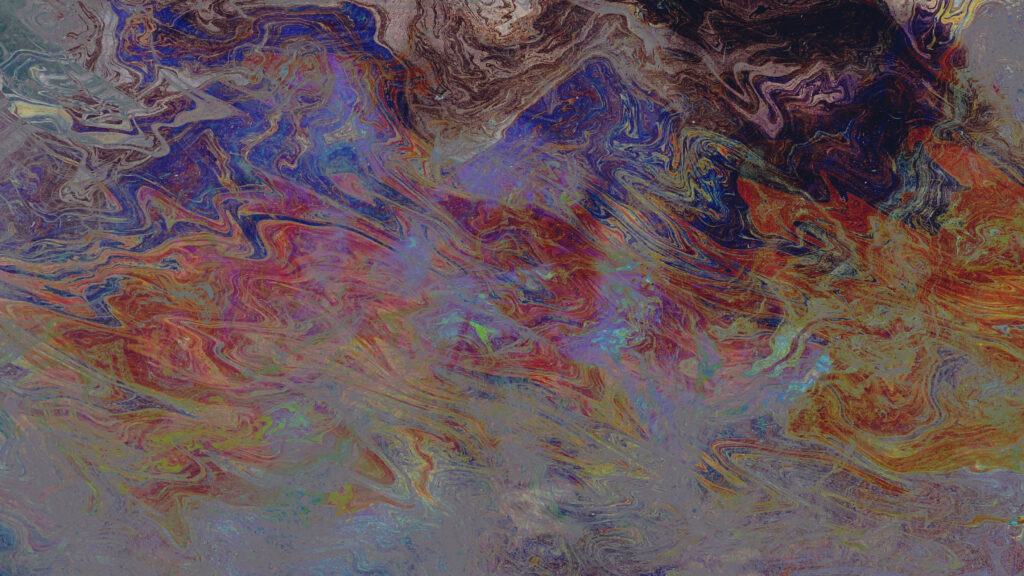
Hayaletlerin varlığında
Kolektif acı çeken topluluklarda hayalet hikâyeleri çoktur. Hindistan’da birçok fethin hayaletleri yazılı olmayan halk kültüründe karşımıza çıkıyor: Toprakları çalan bir hayalet, suçluluk duygusunun arketipi olarak gelen bir hayalet olarak. Bazen şekilsiz küçük şeyler, bazense kanatlı, yüzgeçli veya kuyruklu hayvanlar olarak gelirler ve bize niyetle dinlemeyi ve derimizle nefes almayı öğretirler. Ortaya çıkarlar, bizi korurlar ya da rahatsız ederler, hatırlatırlar, bir seçim yapmamıza yardımcı olurlar, hatta belki evi temizler ve sessizce işlerini yapıp hayalet gibi giderler. Genellikle yalnızca en savunmasız karakter, yas tutan ve dolayısıyla en çok o anda olan ve her türlü müdahaleye en açık karakter tarafından fark edilirler.
Hayalet değişken, maddesiz bir varlıktır. Savunulamaz bir geleceğe uyum sağlamaya veya onu yeniden yapılandırmaya çalışırken her zaman geçmişin içinden süzülen derin şimdiki anla ilgilidir. Aynı zamanda arada bir yerde ve zamansallığın ötesindedir. Bu tezahür, zaman merceğinin yumuşak bir odağa ve de şeylerin mikroskobik ve büyük ölçeğini aynı anda görmenizi sağlayan çevresel bir görüşe sahip olduğu bir zihin durumudur. Bulanıklığın belirsizliği ve orada olanlar. İç dünyanızı korurken kısmen emici olma hali. Hayalet olmak sınırlar konusunda cömert olmaktır. Hayalet hikâyesi yarı saydam bir dil oluşturmamıza olanak tanır: Hem “olur” hem de “olabilir” demeye. Olurdu’ların, olmaya çalışır’ların, belki’lerin olduğu. Arada olmayı, neredeyse olmayı, sahte olmayı değil, spekülatif, sorgulayıcı, simülatif olmayı amaçlayan dil. Hikâyelere gerçekmiş gibi inanmayı amaçlayan. ‘Öyledir’den ziyade ‘eğer öyleyse’ye, ‘ne’yden ‘nasıl’a dayanmak için. Sözcüklerin, tıpkı hava durumu gibi -tahmin edilemez, nüktedan- olduğunu (ya da olmadığını) düşünmek ve onları değiştirmeye çalışmak yerine onlar için bir sunak yapıp tapınmak için. Dil (ve hava durumu), ancak onu kontrol etmeye çalışmazsanız sizi koruyabilir. Bu rastlantısallığa teslimiyet ve bu hayal gücü ritüeli yarı saydamlıktır.
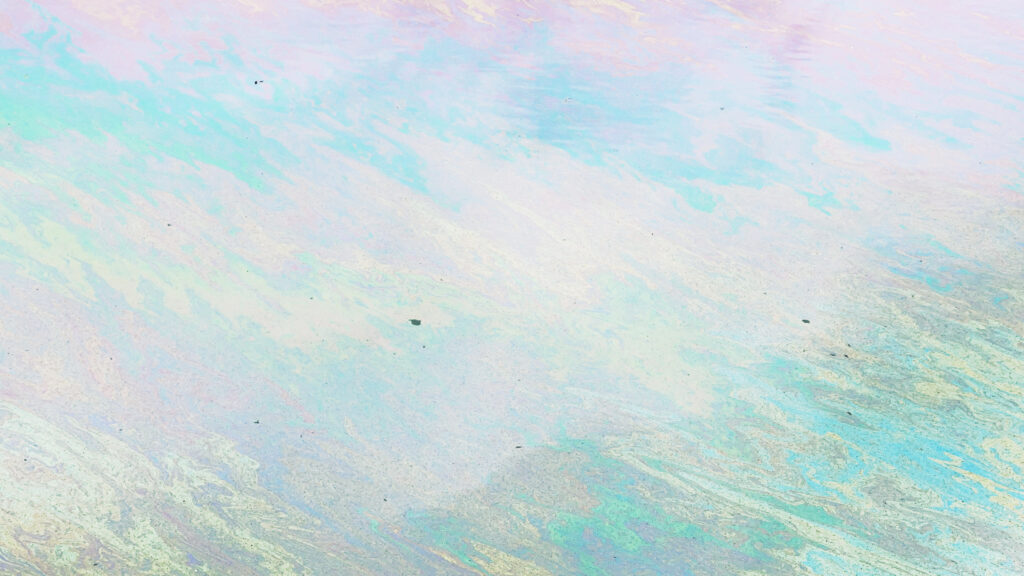
Değişen atmosferlerde
Hayatlarımız hayaletimsi: yarı, meta, boğuk, belirsiz, şekilsiz ve zamansız, bulanık, dağınık, jelatinimsi, incecik, düzensiz, dağınık, gölgeli, şeffaf, şifreli.
Bilinmeyi reddediyoruz.
Nazik, kırılgan, sürekliyiz. Biz ne maddeyiz ne de ruh.
Ne sebep ne de sonucuz.
Biz zar tabakasıyız. Örülü ağ gibiyiz. Camsı bir malzemeyiz.
Yarı saydamlık, aradan keyif alan, “dışarı” çıkması gerekmeyen ama aynı zamanda kendini “içeride” tutması da gerekmeyen, ikili olmayan, çok kısımlı bir cinsellikle ilgilidir. Yarı saydamlık ne erkek ne de kadındır. Açık etmek ya da gizlemek değildir.
Biz buharız.
Biz suyuz.
Muslin, kenevir, ipek.
Bal, balmumu.
Yapraklarız.
Aynı zamanda plastik, petrol, kirlilik, radyasyonuz da. Atmosfer mükemmel bir şekilde görülebilir değildir; daha ziyade toksinler, karbonlar, mikroplar, partikül madde, duman, bulutlar, kükürt, toz, buğu, sis, pus, tohumlar, polen, şüphe, seraplardan oluşan katmanlarla dolayımlanır.
Su da yarı saydamdır, ısındıkça denizanasıyla dolar.
Yarı saydamlık, yuvalarını tellerden ve şişe kapaklarından yapan kuşlar veya manzaralarımız çölleşirken evlerimizde dolaşan kertenkeleler gibi, değişen Doğaya uyum sağlamaya devam ederken birbirleriyle akrabalık kurarak daha yumuşak varoluş yollarını önerir.
Yarı saydamlık türler arasıdır. Bazen titrer ve yeni şekiller, formlar, ateşler yaratır.
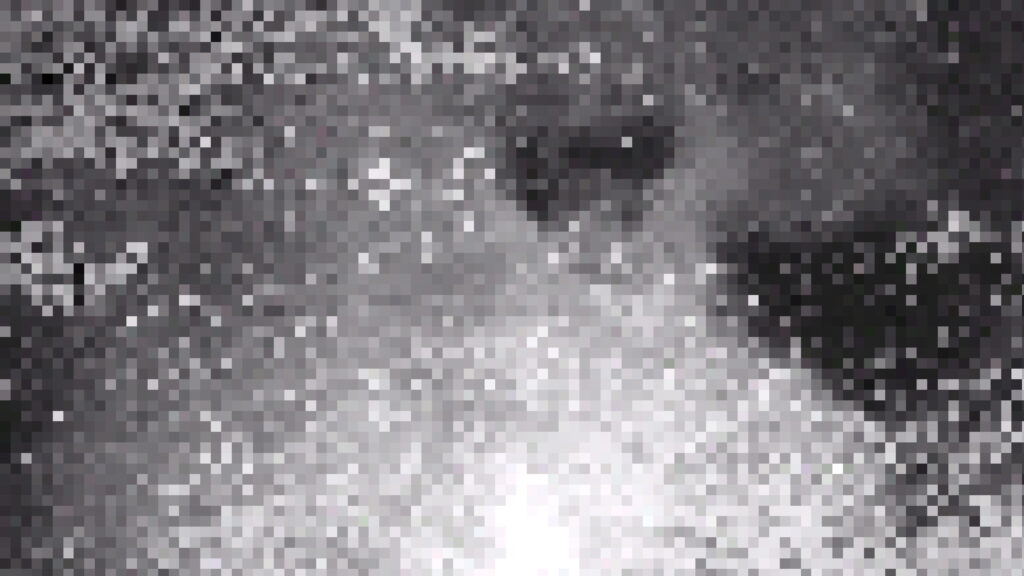
Buzul arşivlerinde
Weddell Denizi’nde, Antarktika’daki buzulların altında, Notothenioid balıkları o kadar şeffaftır ki, beyinlerini ve omurgalarını derilerinden görebilirsiniz. Zamanla ve değişen sularımızla, tüm hemoglobinlerini kaybettiler. Jaali’lerin arkasındaki kadınlar gibi balıklar da yarı saydamlığın belirsizliğini ilgi çekici buluyorlar; diğer türlü onları kapsayacak olan bir sisteme karşı görünmez kalıyorlar.
Polipler, deniz kelebekleri, deniz halkalı solucanları, zooplanktonlar, kriller, jöle larvaları, kalamarlar ve pisi balıklarının hepsi yarı saydamdır. Su altında hafif kalabilen çok hassas kalsiyum katmanları sayesinde, havanın çok karanlık olduğu yerde, yarı saydamlıkları iç dünyalarını aydınlatmalarına olanak tanır.
Buz her zaman yarı saydam bir anı taşıyıcısı olmuştur: Kutuplarda sıkışan kurşun parçacıkları, maden çıkarma tarihimizin öyküsünü anlatır. Buz çekirdekleri, ağaçlardaki halkalar gibi zamanı söyleyen kronometrelerdir. İklimin nasıl değiştiğini görebiliriz, vebaların tarihini görebiliriz, hatta savaşları bile görebiliriz. Buzun bir bilgi taşıyıcısı ve sömürgecilik karşıtı duyusal bir ajan olmasında yarı saydamlığın rol oynadığını düşünmek hoşuma gidiyor. Buz kontrol edilebilir bir netliğe doğru eridikçe, toprakla, geçmişle, tarihle bağımızı kaybediyoruz, atalarımızı kaybediyoruz, geleceğimizi de kaybediyoruz. Buzsuz bir dünya, ufkun sonuna doğru uçmak ve berrak, şeffaf bir cam panele çarpmak gibidir.

Bilinçli ve bilinçsiz benlik arasında
Yarı saydamlık bir araç ve dolayımlamadır. Görüntüler yarı saydamdır, çünkü onlar gerçeğin bir temsilidir. Tam bilginin ve bilgi üzerinde tam kontrolün olduğu bir çağda, ekrana bir gazyağı lambası tutup kendimiz filtre olabilir miyiz? Farklılık hakkı ile bilgi edinme hakkı. Yarı saydamlık orta yoldur. Zanaat ve içgüdü arasındaki, mantık ve sezgi arasındaki, şans ve düzen arasındaki.
Yarı saydamlık durulmayan bir dalgadır, bir duygu dalgası, bir gelgittir. Bir melankoli hissidir ama üzüntü değil, bir zevk hissi ama mutluluk değil.
Yarı saydamlık, gözenekleri, bağlantıları, kalıpları ve ilişkileri tespit etmeye, biçimlendirmeye ve görselleştirmeye yönelik bir çağrıdır. İlişkiler. Mekânsal, zamansal ve sosyo-kültürel sınırların ötesindeki.
Bilinç yarı saydamdır. Farklı araştırmalarda bazen görünüşte farklı fikirler arasındaki kalıplara göz atabiliyoruz. Nükleer kültürü araştırırken bir kuş operası yazıyordum. Kuşa bakmaya gittiğimde onu nükleer bir tesiste ürerken buldum.
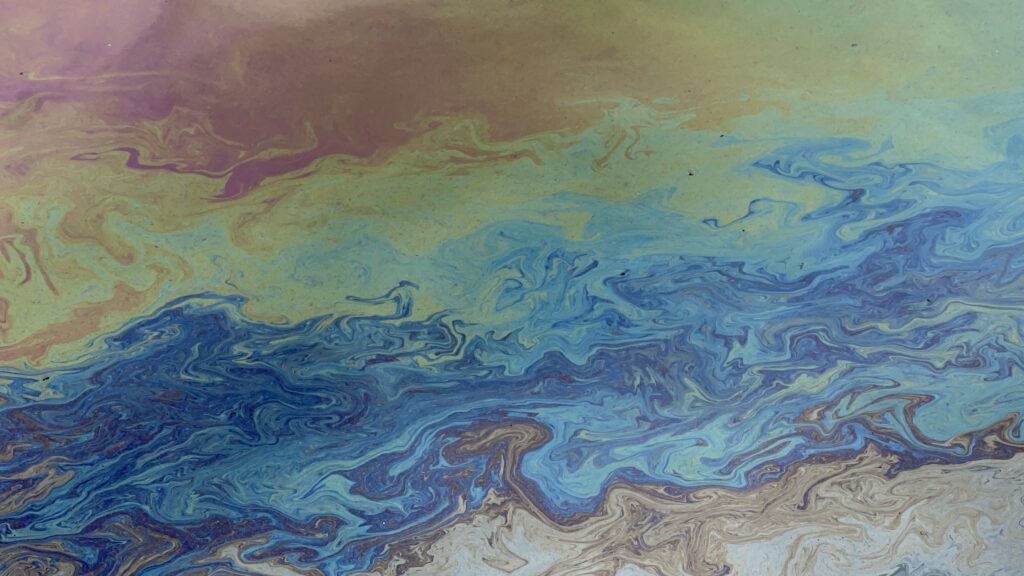
Eylemde
Yarı saydamlığı harekete geçirmek, şeyleri birbirinden ayrı değil de birbiriyle ilişkili olarak algılamamıza yardımcı olabilir mi, yani toksisiteden sevgi, ironiden adalet sızıp yayılabilir mi? Takımada bir adalar topluluğudur: Aynı anda hem kendimiz olabilir hem de ötekiyle bir ilişki bulabilir miyiz? Yarı saydam sularla, hava koşullarına sürekli uyum sağlayan, altındaki deniz canlılarının yarı saydamlığıyla jelatinimsi olan kıyı şeridimizle bağlanabilir miyiz? Yeni kültürleri, birçok olası kimliği özümseyerek direnip kök salabilir ve hâlâ melez olabilir miyiz? İç sesimizi öldürmeden çok dilli konuşabilir miyiz? Yaşamlarımızın laboratuvarında sezgilerle çalışabilir miyiz? Ve bombalar havayı bulanıklaştırdığında, sıcaklık atmosferi yapışkan hale getirdiğinde ve seller toprağın sıvı hale gelmesine neden olduğunda, felaketten kurtulmamıza yardımcı olması için yarı saydamlığın maddeselliğine başvurabilir miyiz?
Daha çok şiir gibi olabilir miyiz, ne çok fazla, ne çok az, başı ve sonu olmayan, parçalı ve bütünlüklü, sabit ve değişken, hem anlamlı hem de saçma?
Yarı saydamlık, sabit bir ütopyaya yönelik imkansız bir arzu değildir ve doğası gereği aşırı değildir; farklı zamansallıkların şimdiki anı bilgilendirmesine, etkilemesine ve değiştirmesine izin verirken derin bir var olmayı önerir. Görünmek ve görünmemek için. Ne opaklığın tahribatı ne de şeffaflığın dolaysızlığı.
Yarı saydamlık ışıkla ilgili olsa da, yalnızca görmeyle ilgili değildir; insan olmayan yaratıkların nasıl seslenip tepki verdiklerini dinlemeyi, petrol ile su arasındaki yere batmayı, onun itici gücünü fark etmeyi ve yine de onun parıldayan parlaklığına hayret etmeyi ister. Yarı saydamlık sapmaktan zevk alır.
Advaya’nın ‘takımadalar olarak dünya’sına, okudukları için Kate Marshall’a ve Alexis Rider’a, ve yarı saydamlığa olan inançlarından dolayı Protodispatch ekibine teşekkürlerimle.
Edouard Glissant’a, Judith Butler’a, Ming Smith’e, Byung-Chul Han’a, Andrés Jaque’e ve Hindistan ile Pakistan sınırındaki Kutch’un Rann bölgesindeki tuz çölü nedeniyle sevdiklerinden ayrı düşen Sufi şarkıcılara selam olsun.
